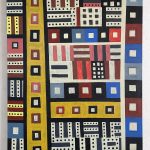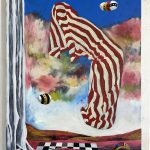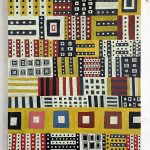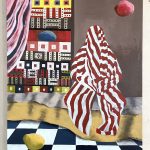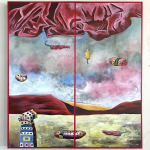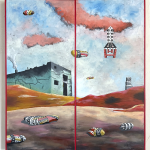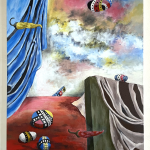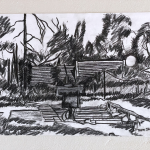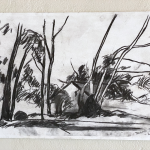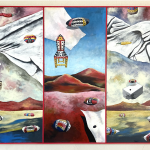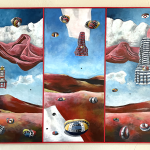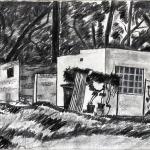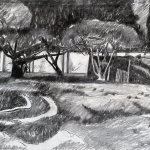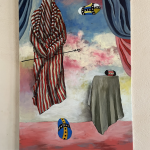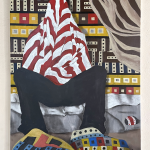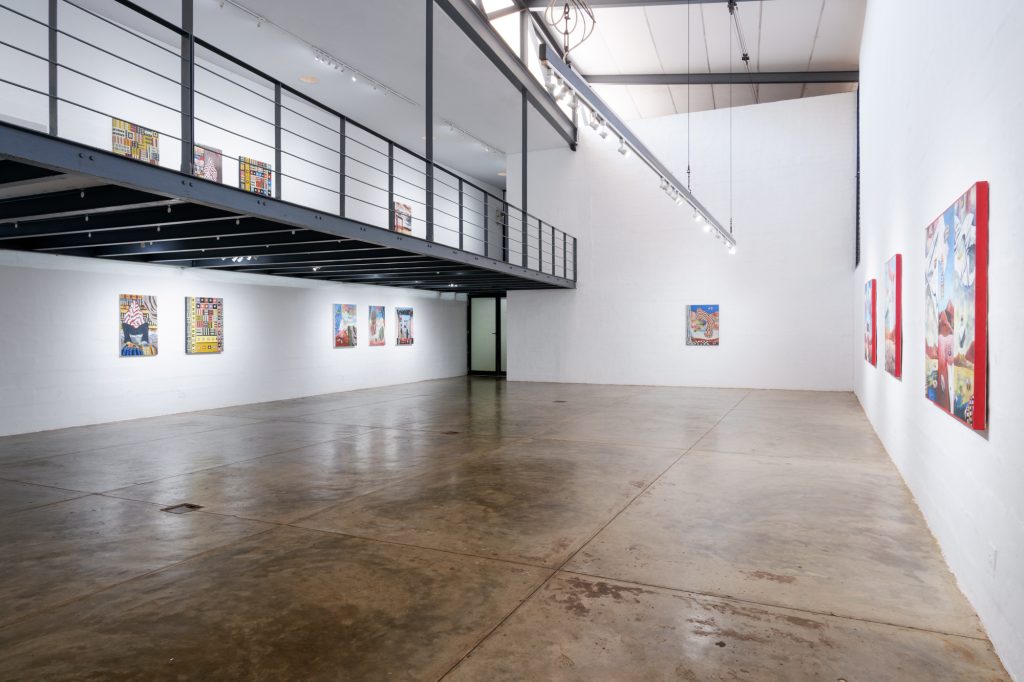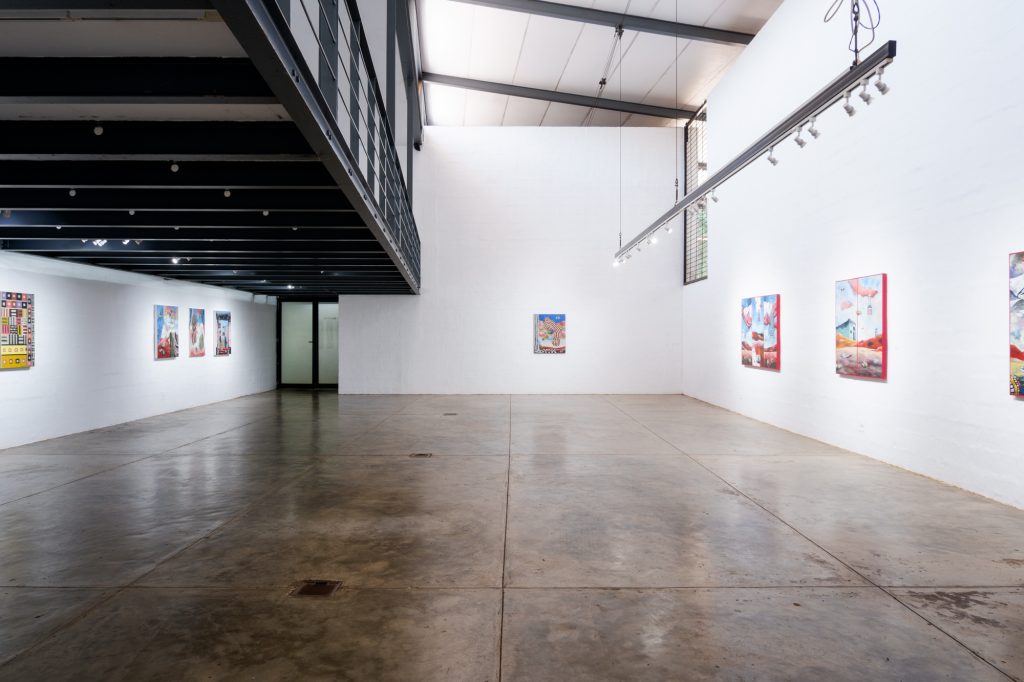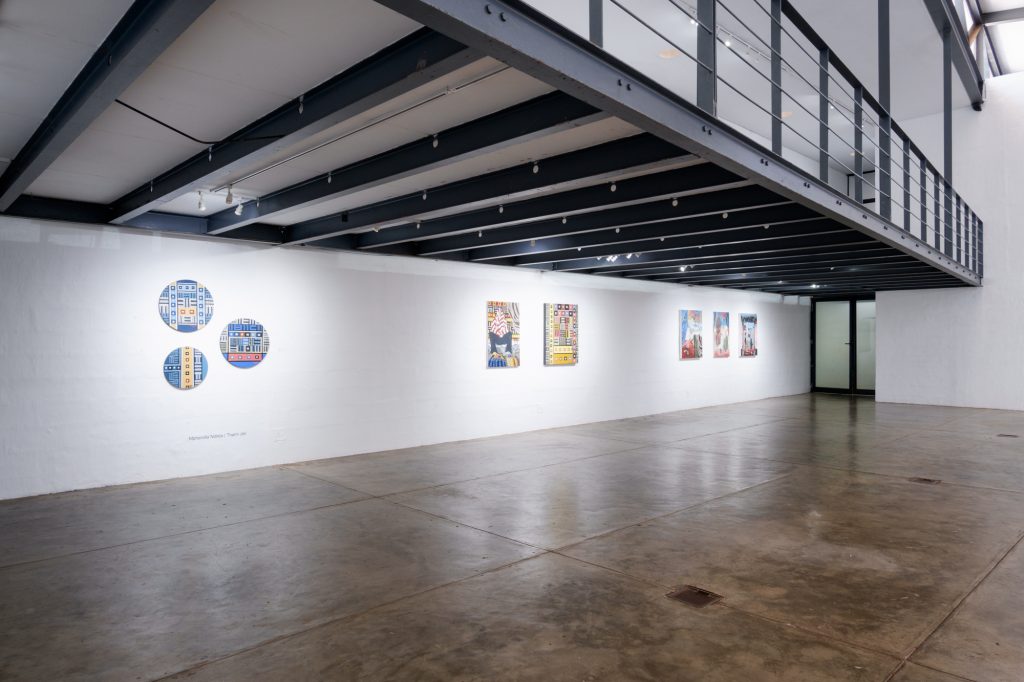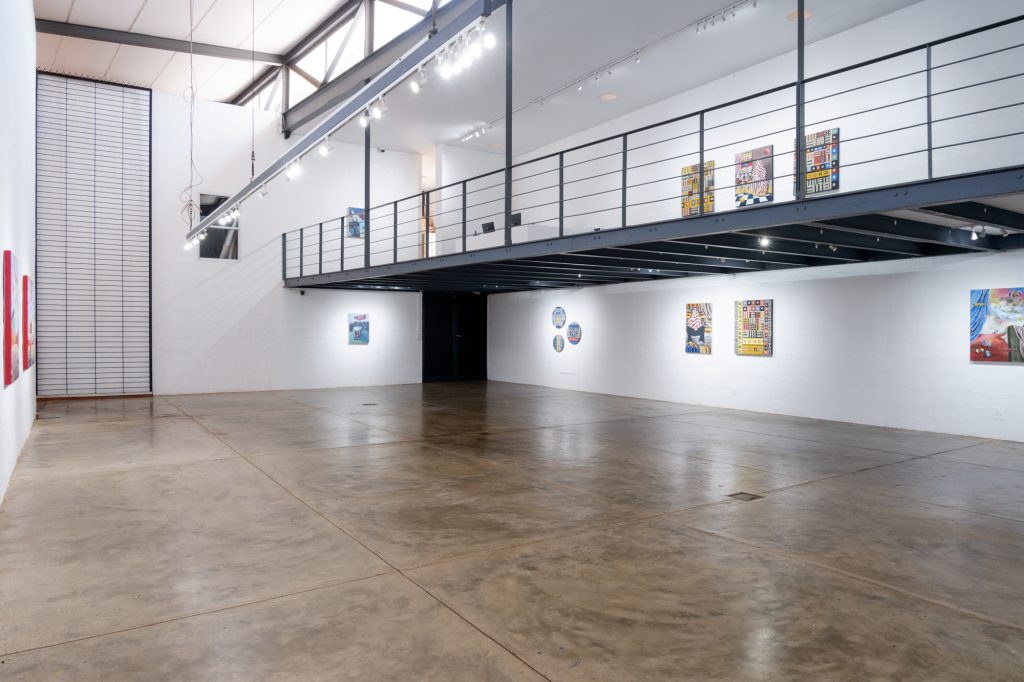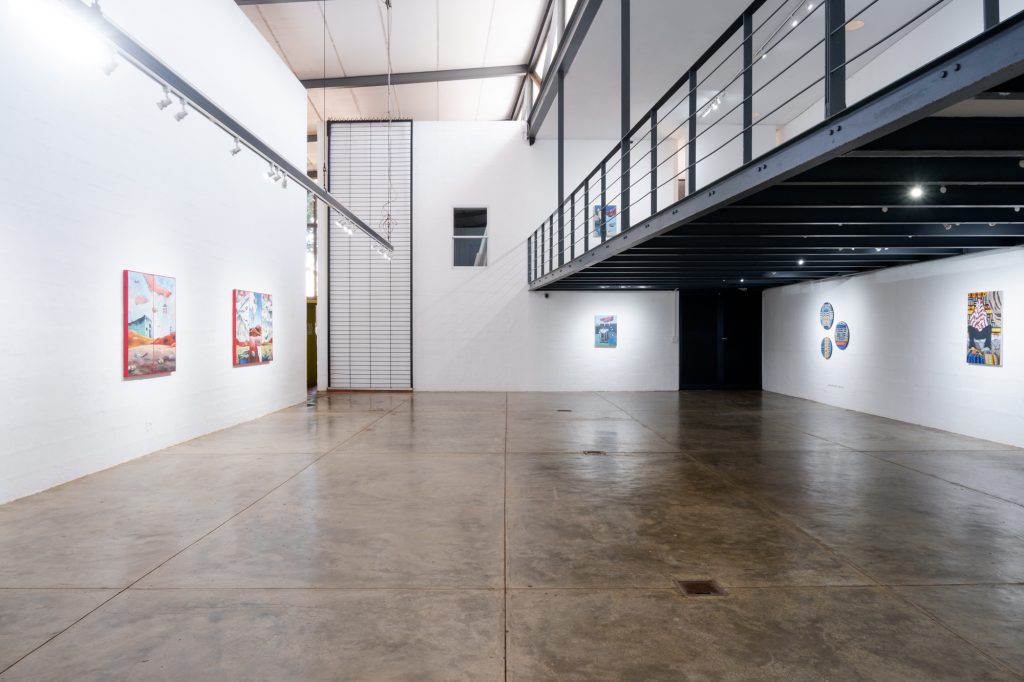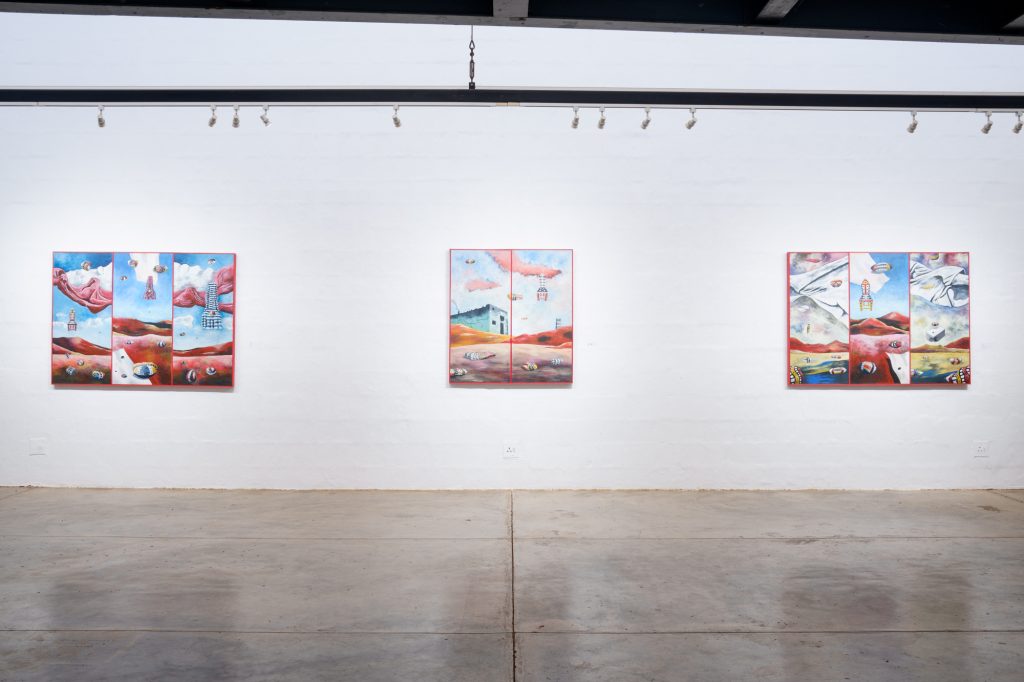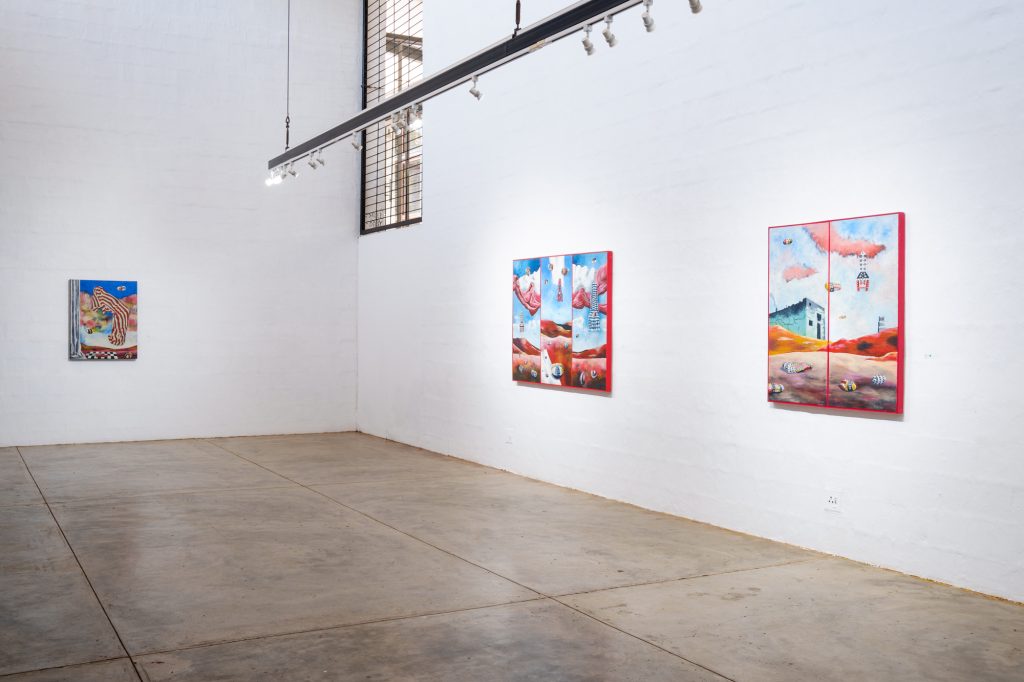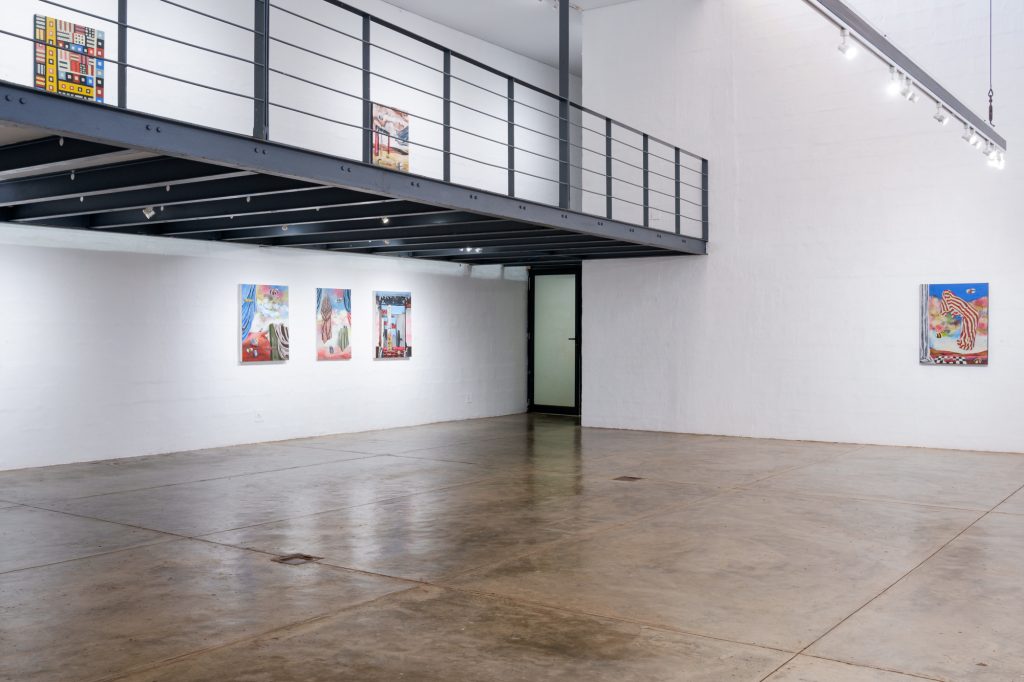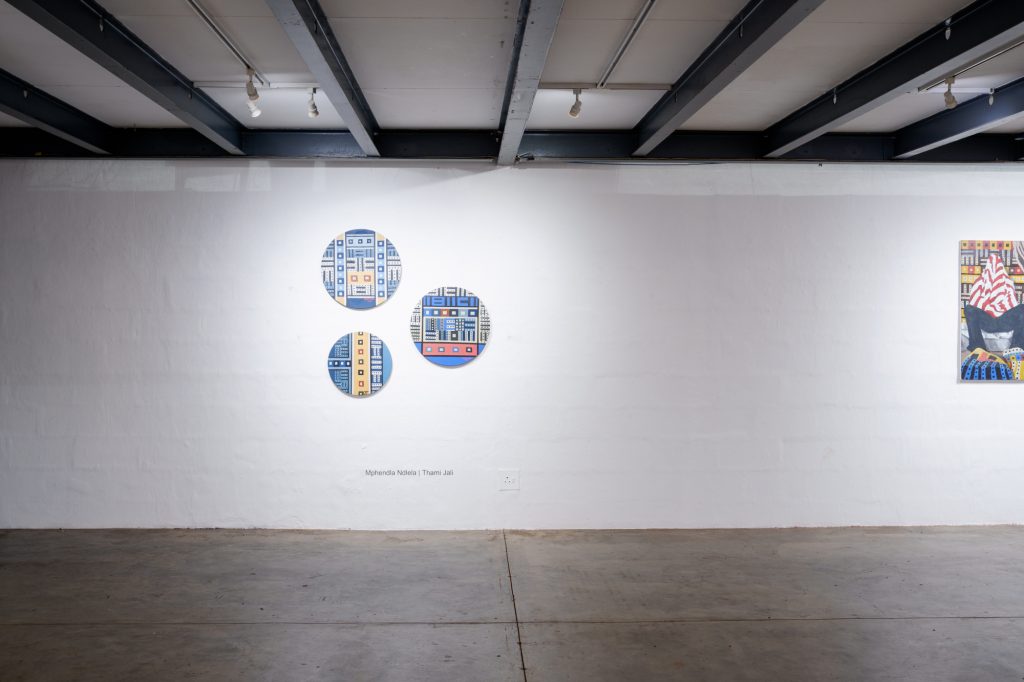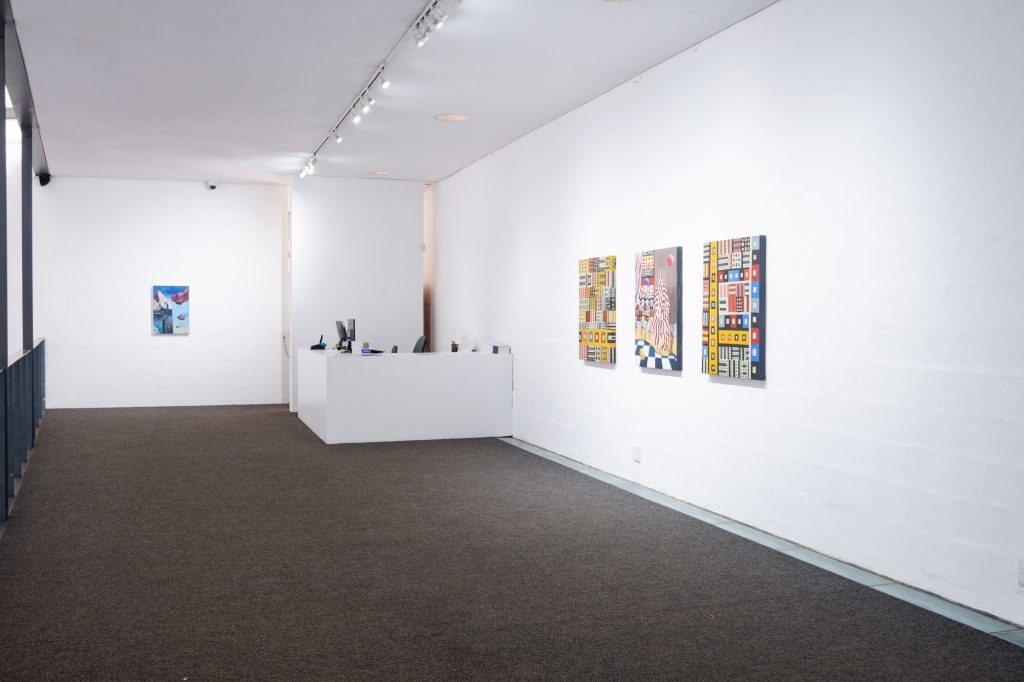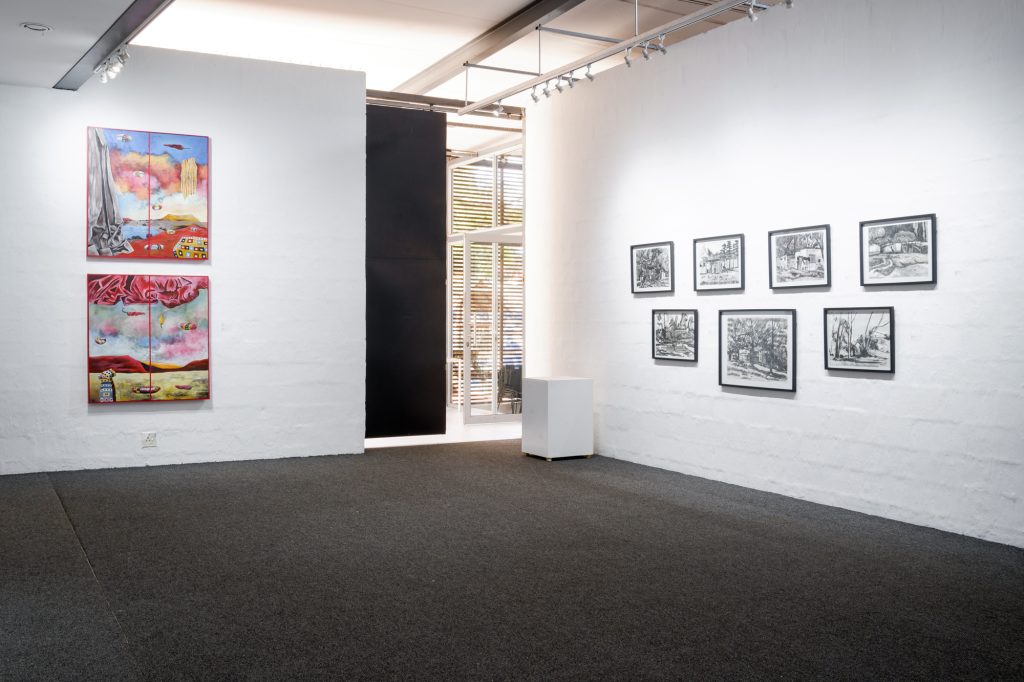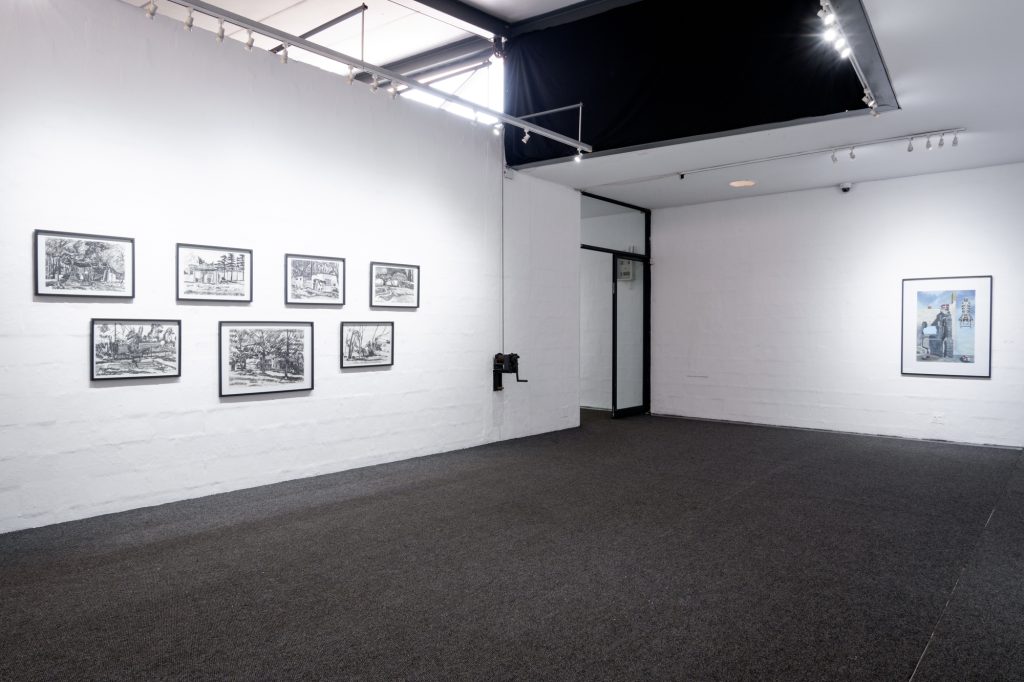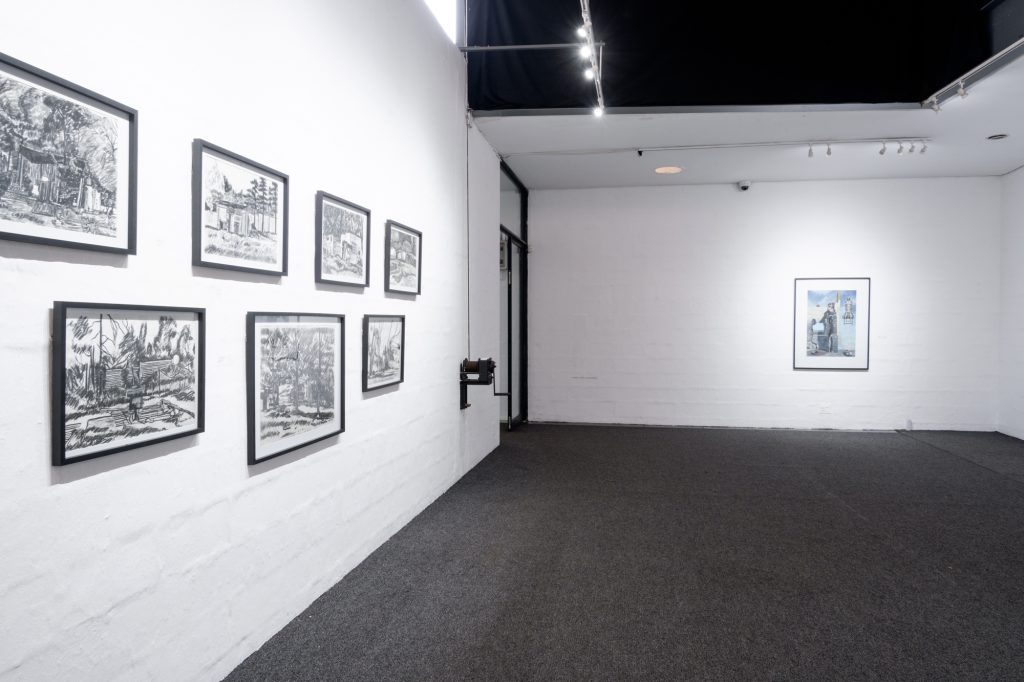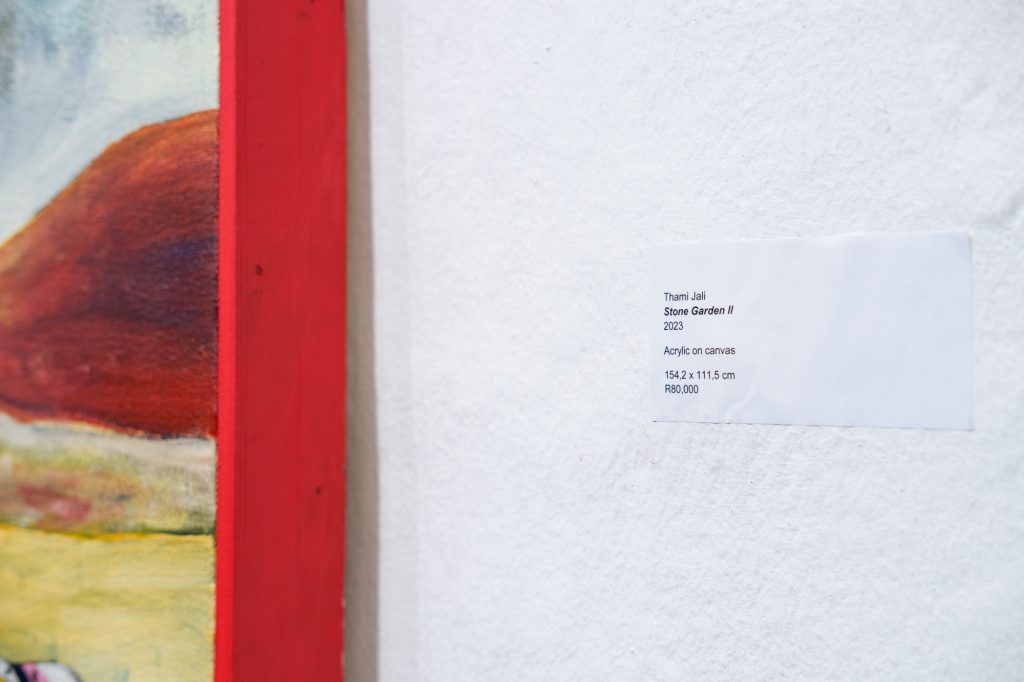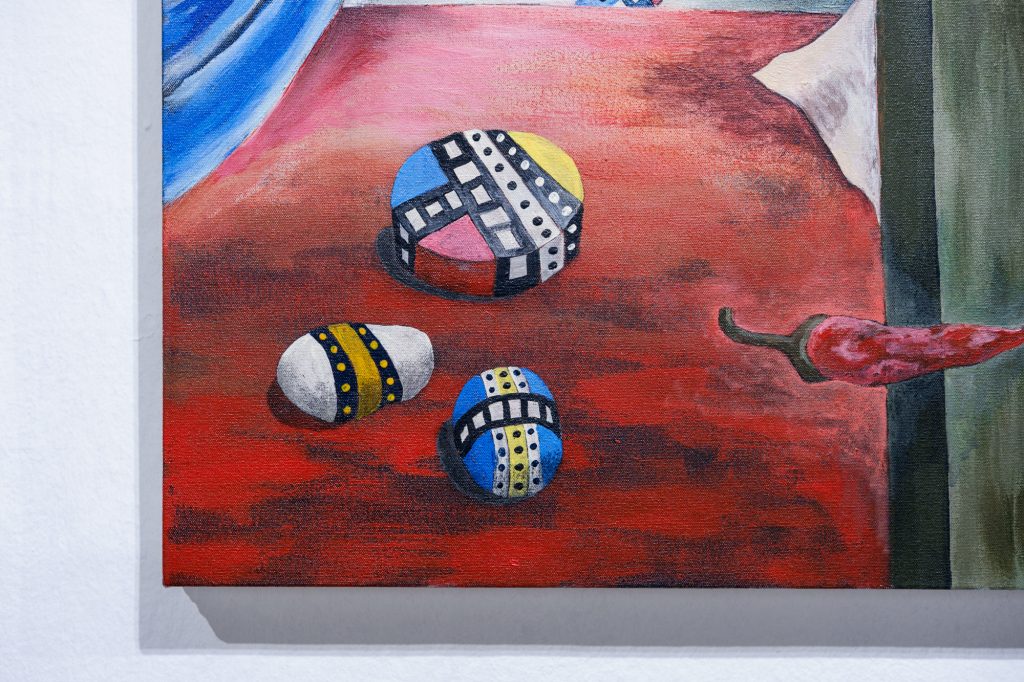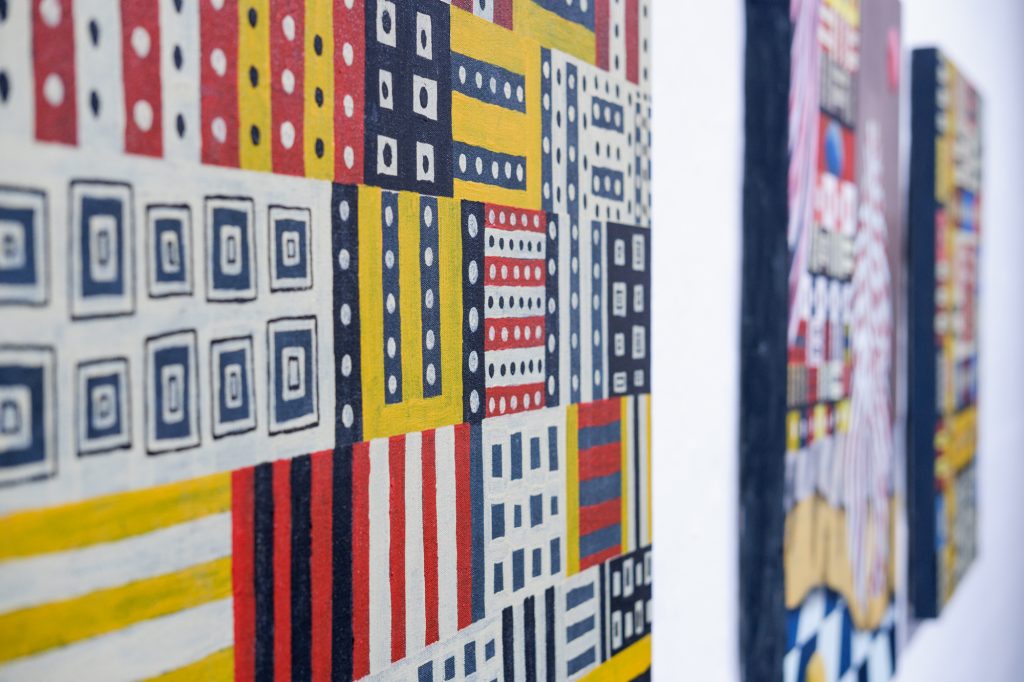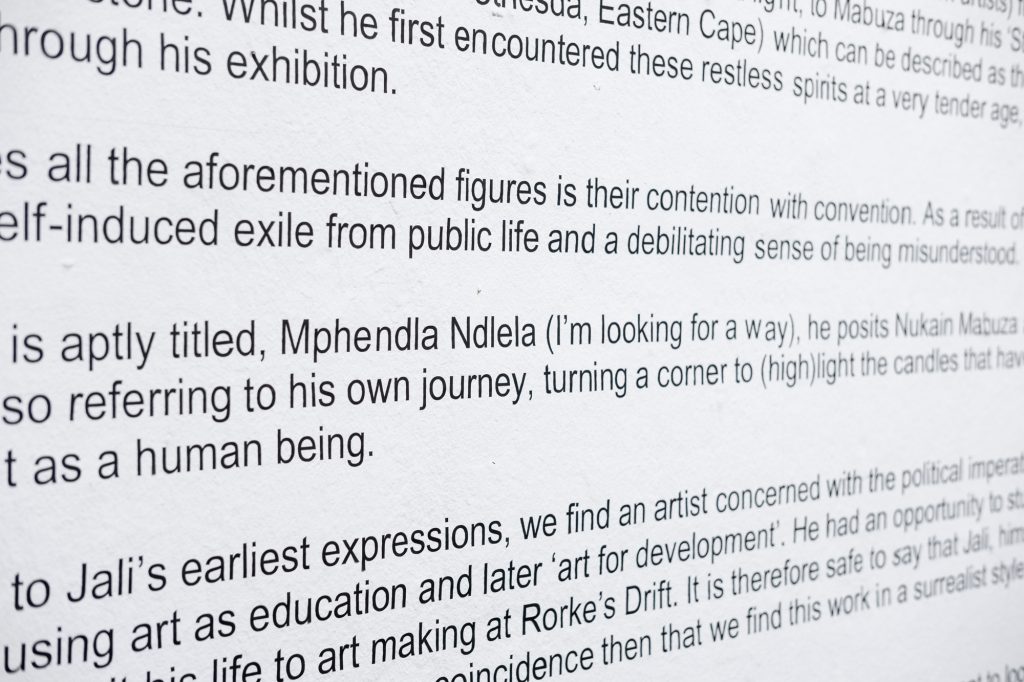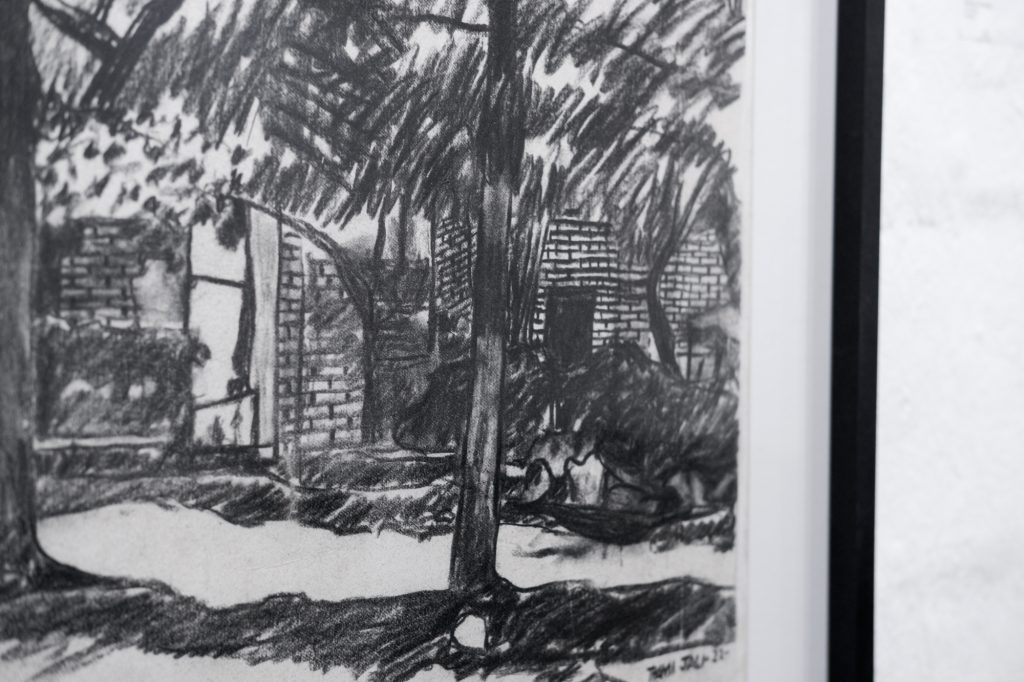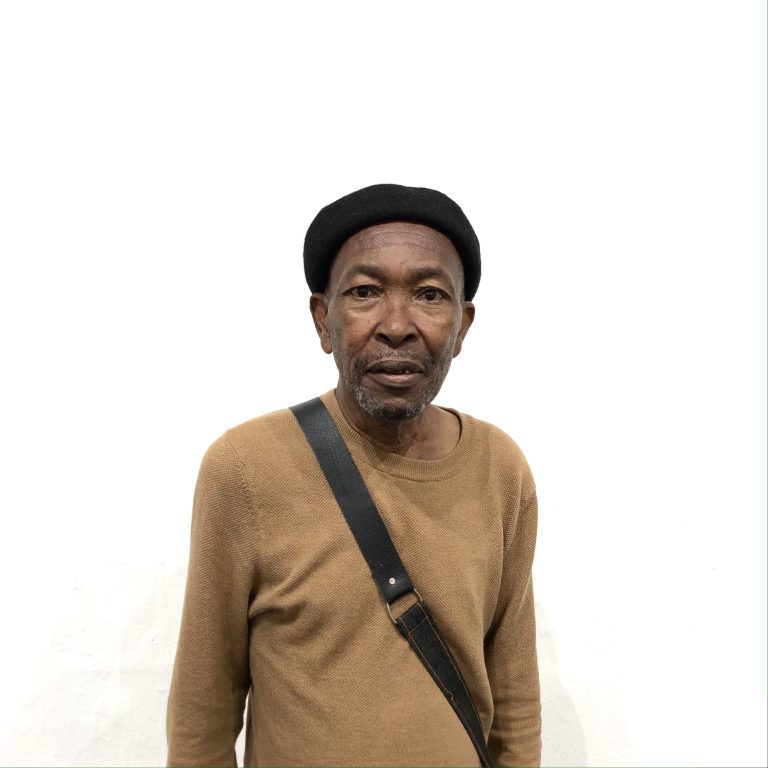MPHENDLA NDLELA
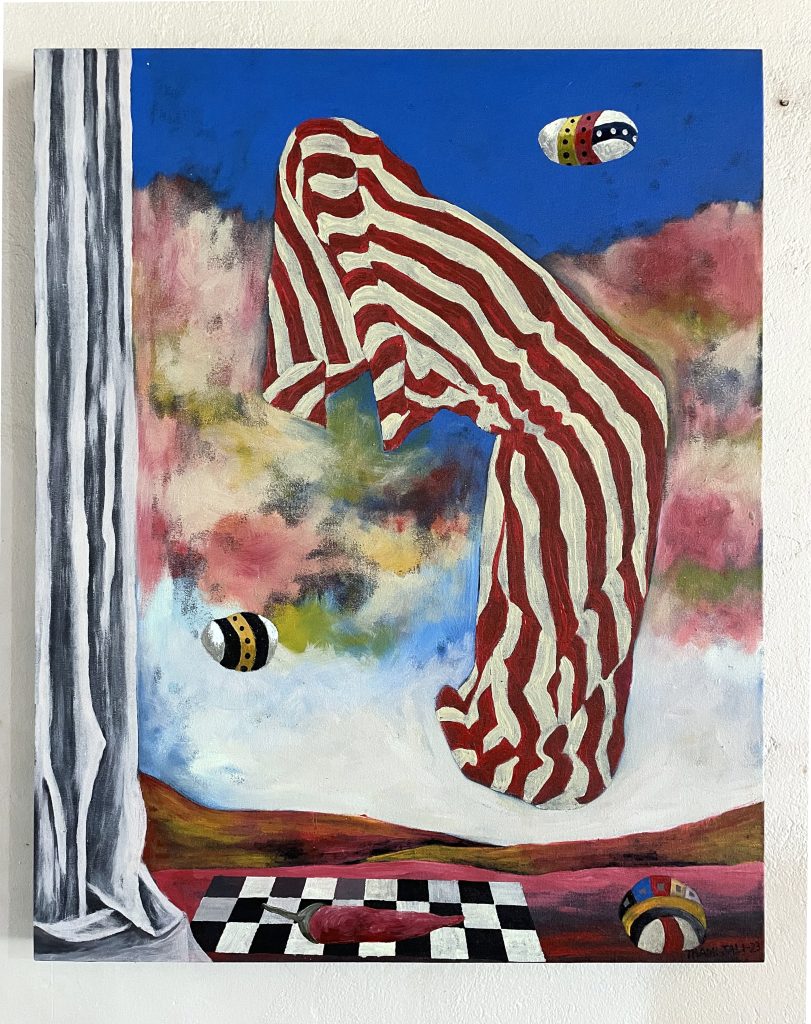
Date
Artists
Thami Jali
For more Info, contact us on: gallery@kznsagallery.co.za
Njoba neyami indlela yakhanyiswa izibani zabanye, nami ngifisa ukwenza njalo, ngikhanyisele abanye ngesami isibani.
Since mine was illuminated by the light of a select few, I take it upon myself to light the path of others.
Sewn together in this exhibition are threads of an homage to individuals who are driven by the restless spirit. In particular, three people, Helen Elizabeth Martins1 and Nukain Mabuza, along with the artist’s grandmother.
Thami Jali has ventured far, one might say he’s gone too far this time around. He’s taken us on a surrealist voyage to pay homage to one Nukain Mabuza2. Although not a self-proclaimed artist, Mabuza has been collapsed into the category of ‘outsider artist’3. Mabuza created his environment- based creations near the border of Swaziland, on a farm named Esperado, assembling sculptural form, visual narration and ‘scenography’ or landscaping. They hold a strong shamanistic or divinative quality. Their sculptural, mural and painting form bring us to the nexus of Thami Jali, someone equally dexterous in sculpture as he is in painting, with a strong mural making portfolio.
Jali has long been inspired by such visionaries (a deliberately avoidance to call them artists) from a young age. Starting with his grandmother who played clandestine tricks with the mirror and light, to Mabuza through his ‘Stone Garden’ and later encountering Helen Martins of the Owl House (Nieu-Bethesda, Eastern Cape) which can be described as the meeting of light (and dark) through ground glass and stone. Whilst he first encountered these restless spirits at a very tender age, it is only now that he has decided to honour them through his exhibition.
The exhibition is aptly titled, Mphendla Ndlela, he posits Nukain Mabuza as a sojourner charting a unique path. The artist is also referring to his own journey, turning a corner to (high)light the candles that have illuminated his own journey, not only as an artist but as a human being. From this equation, jazz cannot be left out. In fact, he wonders, what sound might have enthused Nukain? His ‘Rhapsody for Nukain’ works at this question. It is followed by Jazz I and Jazz II and bookended by The Blues. The paintings with this jazz sound are all circular in form. One would not struggle to find artists who dealt with ‘strife’ in the jazz canon from Chet Baker, Lee Morgan to Thelonius Monk, to name a few.
What combines all the aforementioned figures is their contention with convention. As a result of which, they endured some form of alienation, a self-induced exile from public life and a debilitating sense of being misunderstood.
Charting back to Jali’s earliest expressions, we find an artist concerned with the political imperative, he transitioned to working with young people using art as education and later ‘art for development’. It is during this time that he encountered Mabuza and Martins, these encounters took him back to his grandmother whom he describes as severely reserved and therefore misunderstood. It is, therefore, Helen Martins and Nukain Mabuza who provided him with a basis for understanding the experience of his grandmother. There is another form of delirium worth pointing out here and it has to do with Jali himself. He had an opportunity to study law but rejected this option for his calling to commit his life to art making at Rorke’s Drift. Such a decision calls upon various kinds of derisions from society, when you choose to give up the opportunity to enjoy a financially buoyant life during times of racial repression especially when such an opportunity is given to a very select few. Instead, you choose a life of art-making which is a close encounter with a perceived immiseration. It is therefore safe to say that Jali, himself, has been living with some kind of delirium since that decision, it is no coincidence then that we find this work in a surrealist style, an aesthetic not too far from the delirium.
Artist and writer, JFC Clarke, has in the same vein paid homage to Mabuza and so Jali can be seen as being in conversation with Clarke over their ‘fav’.
Bra’Thami has an extremely observant nature, he has played with motifs which are easily found in Mabuza’s Stone Garden and has integrated elements from the folklore surrounding Mabuza into his images. One such is the reappearance of the chairs in his series, these are said to be some of the very few assets owned by Mabuza, by choice. Furthermore, bra’Thami considers Mabuza’s labour in physically shifting and painting rocks then walking a distance to get perspective and returning to continue the work. He considers the required scenographic sensibility and the frugal yet imaginative use of limited resources as a true creative engagement. All this has to be accounted for if you want to truly appreciate Mabuza’s Stone Garden. Bra’Thami laments a lost moment to embrace a new visual language through Mabuza’s visual approach, a language that is uniquely ‘ours’. He understood Mabuza’s Stone Garden as a movement and, in jest, he wants to anchor himself as the father of that movement; through this exhibition.
Jali draws inspiration and reverence from the social angst that these figures have had to endure. It is this irreverent and misunderstood spirit that this exhibition seeks to honour. According to Jali, these figures were not just ahead of their time but they were operating at another temporal dimension altogether; because we still haven’t come to terms with their expressions.
Whilst this exhibition is about homage, it is also his urge to artists operating in this moment to look to these agents as anchors and seers of something beyond the visual. To operate outside of trends and that the artist’s vision should not be tethered and distracted by public perception. Nawe phendla eyakho indlela.
1 Ross, S, I. (1997) This is My World: The Life of Helen Martins, Creator of the Owl House. Cape
Town. Oxford University Press
2 Clarke, J. (2013) The Painted Stone Garden of Nukain Mabuza, 2013. Pretoria. Leopardstone
Private Press.
3 Maizels, J. (1996) Raw Creation: Outsider Art. United States of America. Phaidon
Blues for Nukain III
Acrylic on canvas
50cm diameter
2023
R25 000
Jazz I
Acrylic on canvas
72cm x 90cm
2023
R50 000
Linbro Park Artist Village I
Charcoal on Fabriano
49,5cm x 35cm
2022
R10 000
Resurrection I
Acrylic on canvas
72cm x 90cm
2023
R50 000
Rhapsody for Nukain
Acrylic on canvas
72cm x 90cm
2023
R50 000
Seated Figure I
Acrylic on canvas
72cm x 90cm
2023
R50 000
Stone garden III
Acrylic on canvas
102,5cm x 111,5cm
2023
R64 000
Stone garden IV
Acrylic on canvas
102,5cm x 111,5cm
2023
R64 000
Stone garden V
Acrylic on canvas
102,5cm x 111,5cm
2023
R64 000
Stone Garden VI
Acrylic on canvas
72 x 90.5 cm
2023
R 50 000
Linbro Park Artists’ Village V
Charcoal on Fabriano
35 x 49.5 cm
2022
R10 000
Jazz II
Acrylic on canvas
72cm x 90cm
2023
R50 000
Linbro Park Artists’ Village VI
Charcoal on Fabriano
50 x 75 cm
2022
R15 000
A Day in July 2021 I
Acrylic on canvas
90 x 72 cm
2023
R 50 000
Linbro Park Artists’ Village IV
Charcoal on Fabriano
35 x 49.5 cm
2022
R10 000
Stone Garden II
Acrylic on canvas
154.2 cm x 111.5 cm
2023
R 80 000
Stone Garden I
Acrylic on canvas
154 x 111.5 cm
2023
R 80 000
Linbro Park Artists’ Village II
Charcoal on Fabriano
35 x 49.5 cm
2022
R 10 000
Linbro Park Artists’ Village III
Charcoal on Fabriano
35 x 49.5 cm
2022
R10 000
Resurrection II
Acrylic on canvas
90 x 60 cm
2023
R 35 000
Seated Figure II
Acrylic on canvas
90 x 60 cm
2023
R 35 000


